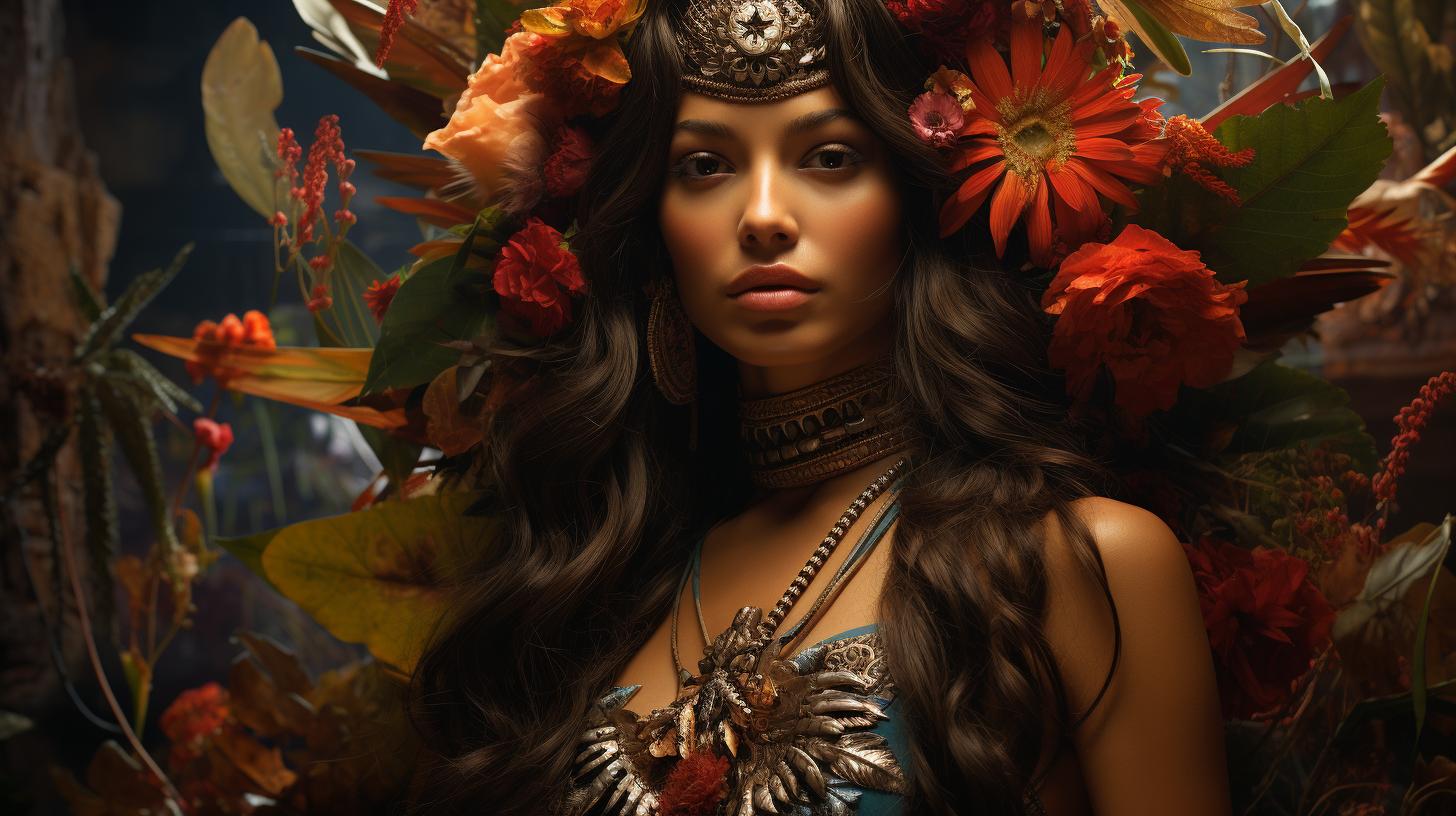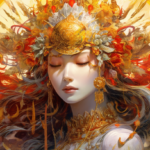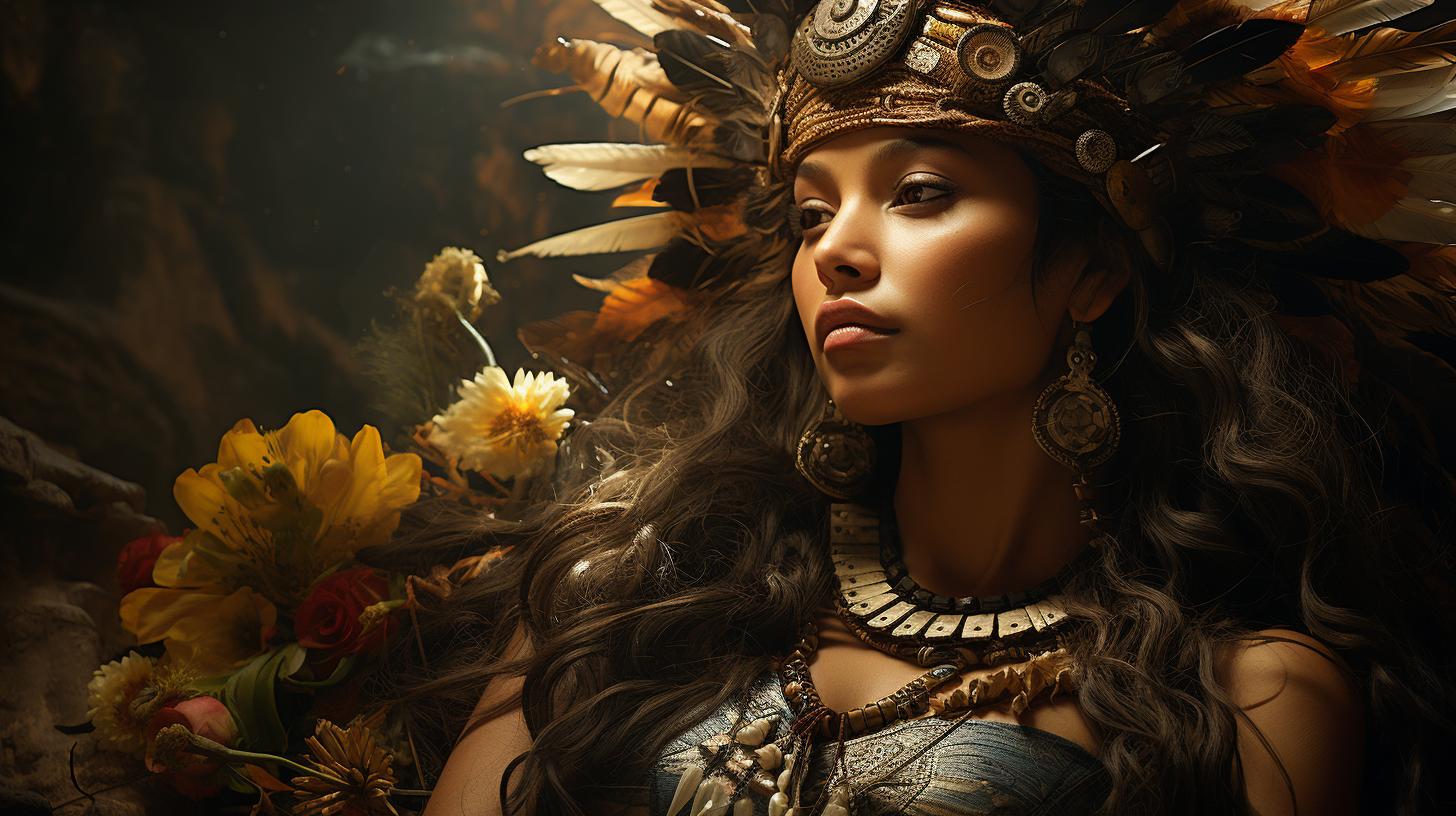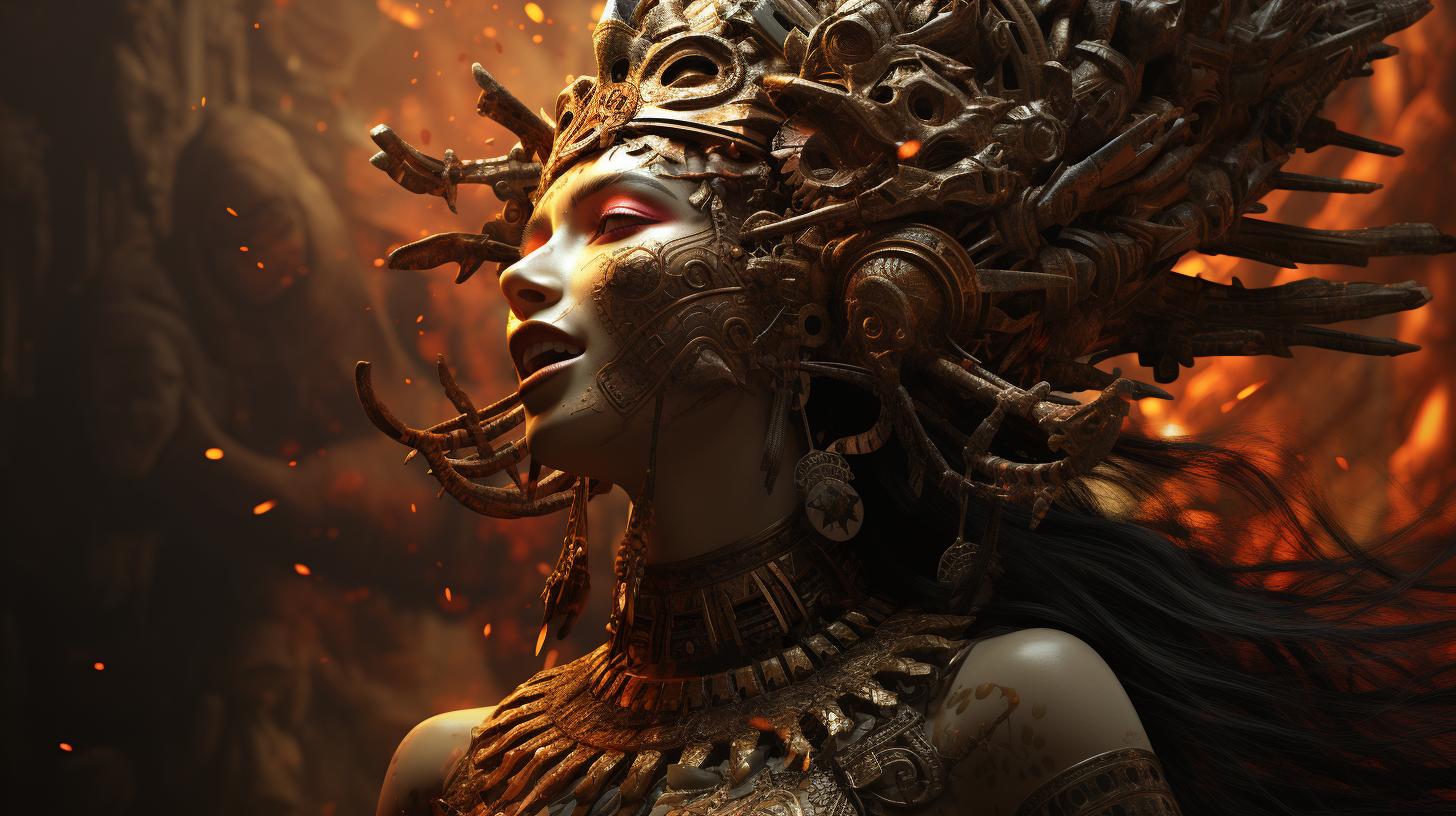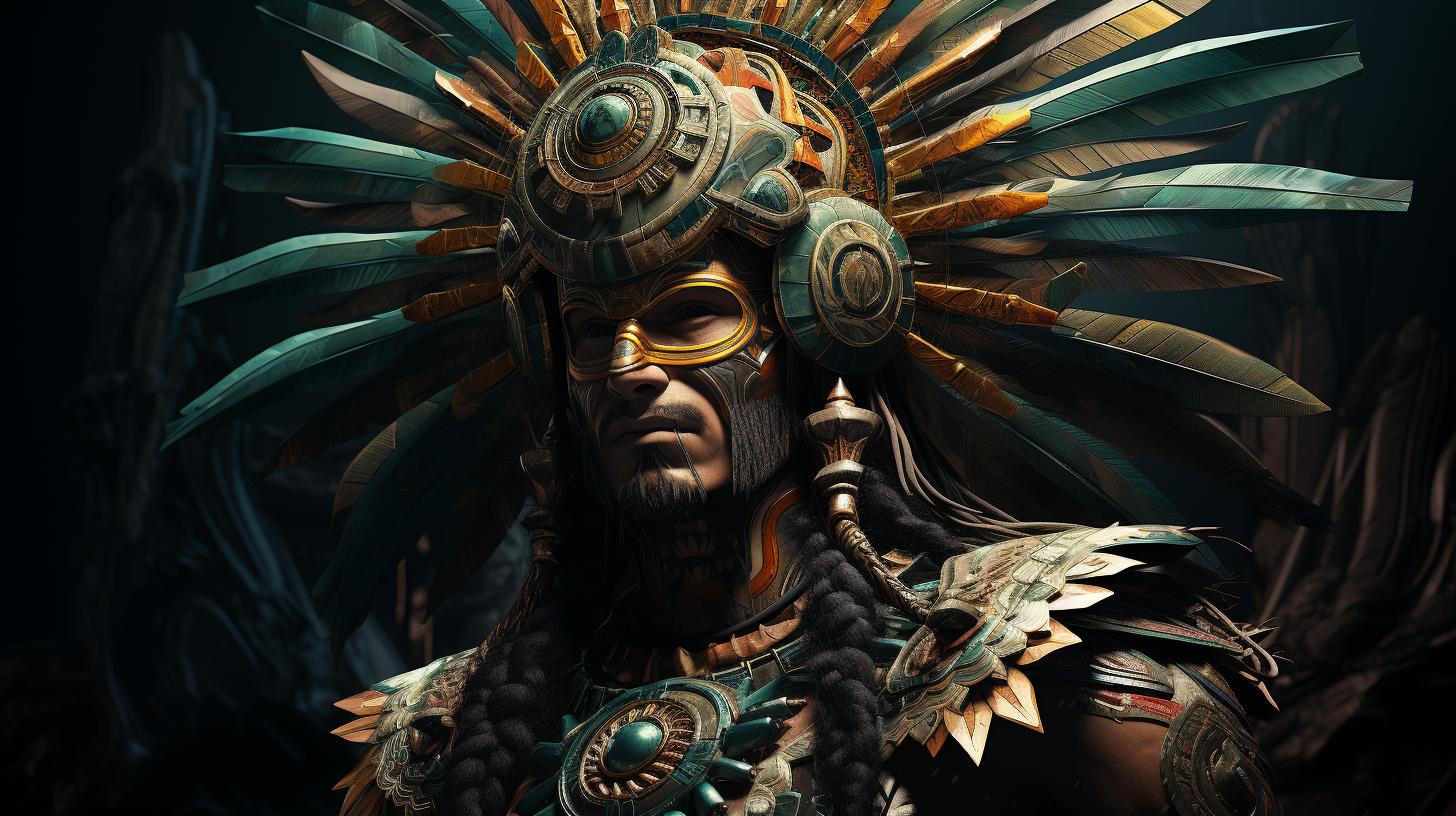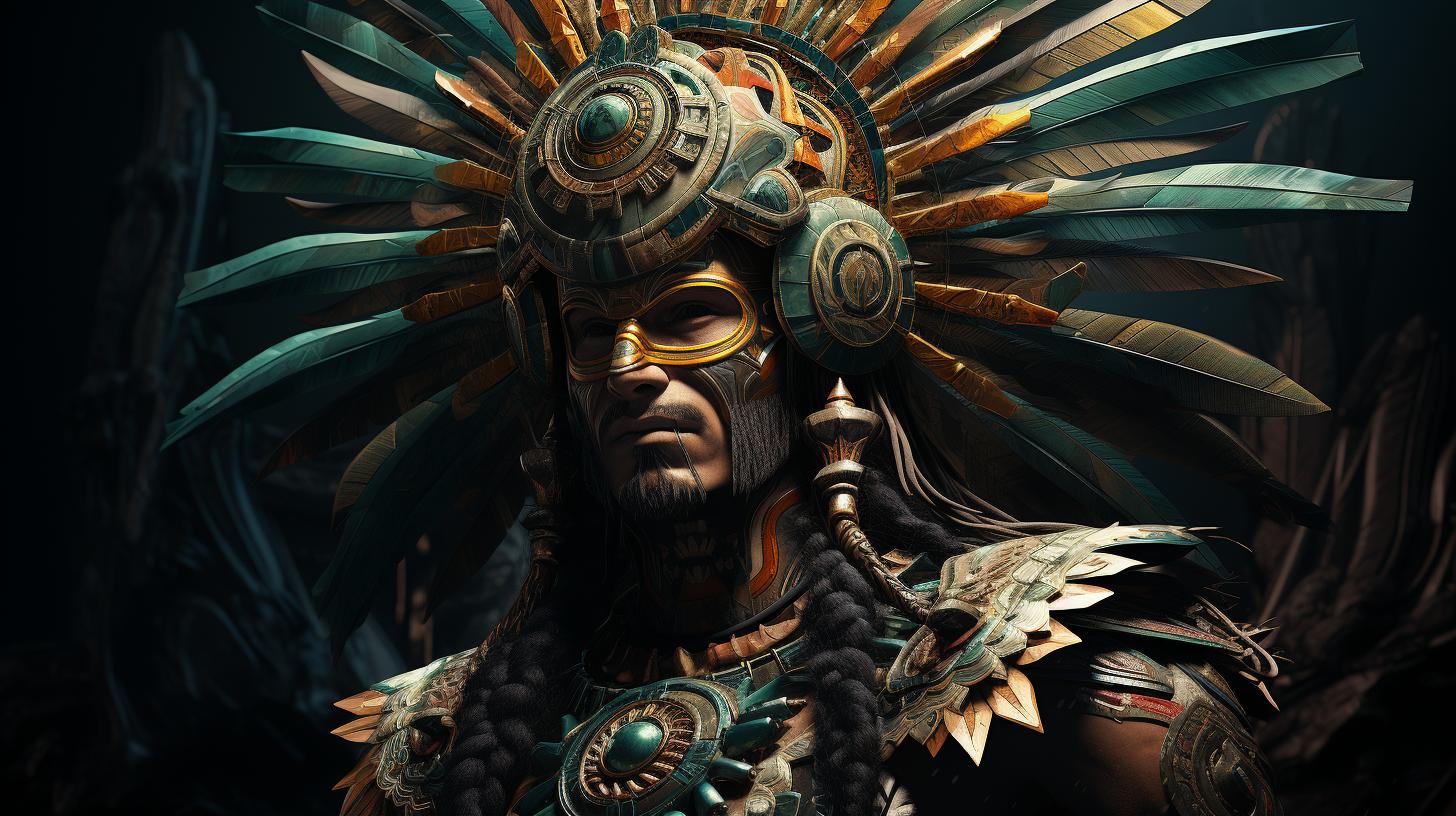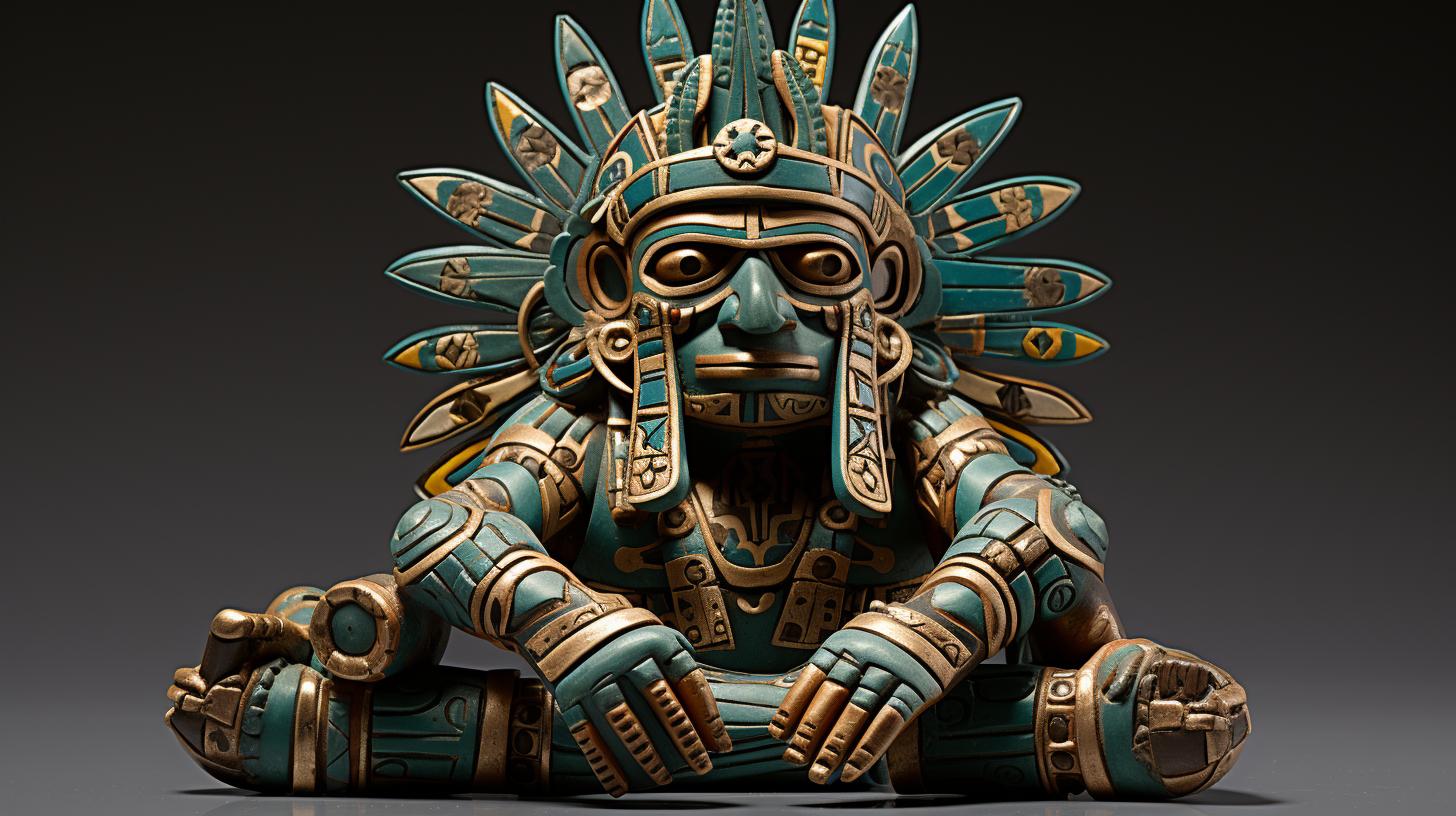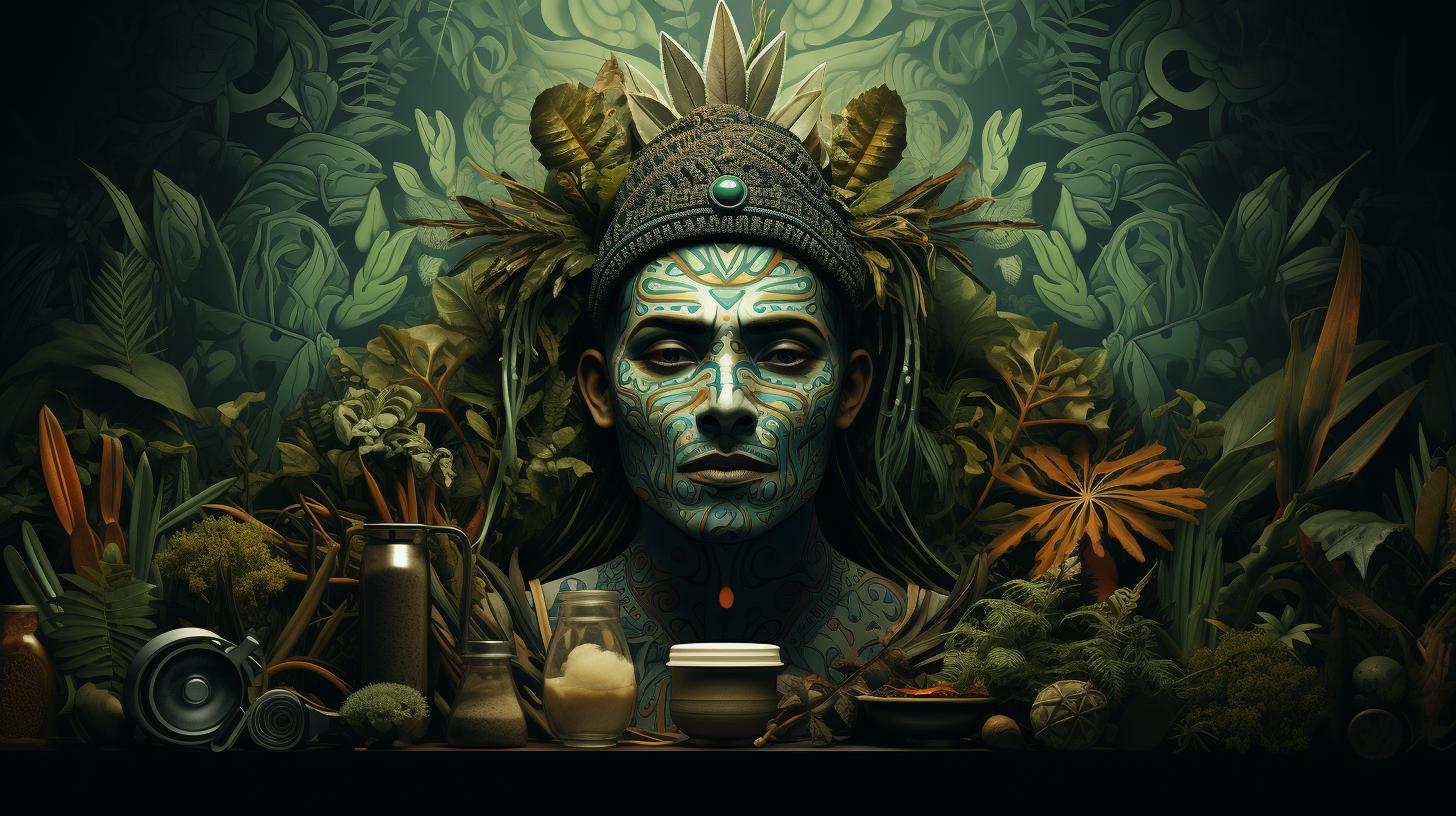Xochitlicue Goddess: The Fertility and Life-Bringing Deity of Aztec Mythology
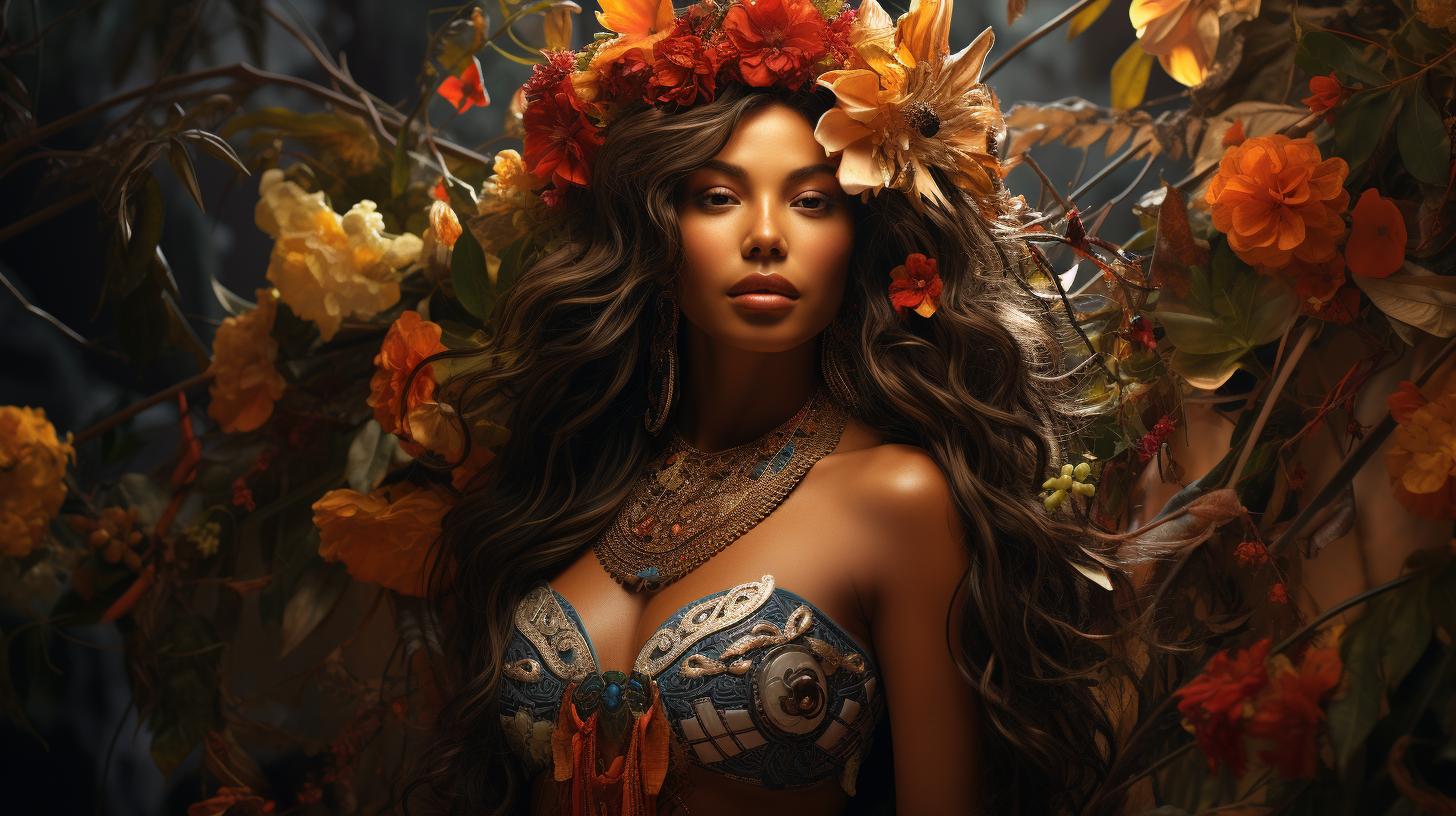
Xochitlicue goddess is a significant deity in Aztec mythology, revered as the goddess of fertility, life, and death. Also known as “the one with a skirt of flowers,” Xochitlicue embodies the connection between nature and plants.
She is not only the patroness of fertility but also guides beings through the cycle of life and death. Xochitlicue’s influence expands to love, overseeing artisans, prostitutes, pregnant women, and childbirth.
As the earth’s provider, she is associated with flowers, plants, games, and dance. Celebrated every eight years, her festivals feature animal masks and floral adornments. Xochitlicue’s importance cannot be understated in the Aztec pantheon, being revered and adored as one of the most significant deities.
She holds a special twin-sister relationship with Xochiquetzal, the goddess of flowers, and exhibits various connections and unions with other gods.
Overview of Xochitlicue Goddess
The Xochitlicue goddess holds a significant role in Aztec mythology, embodying the essence of fertility and life. This section provides an introduction to the deity, her profound importance in the Aztec pantheon, and her connections to other deities.
Explore the significance of Xochitlicue as the goddess of fertility and life and learn about the fascinating associations she shares with other gods in Aztec culture.
Introduction to Xochitlicue Goddess in Aztec Mythology
Xochitlicue is an esteemed goddess in Aztec mythology, revered for her influence over fertility, life, and death. Delve into the origins of Xochitlicue and her name’s meaning as ‘the one with a skirt of flowers’ in the Nahuatl language.
Discover how her name reflects her deep connection to nature and plants, highlighting her role as a cosmic essence of life and rebirth.
Significance of Xochitlicue as the Goddess of Fertility and Life
Xochitlicue’s importance as a goddess of fertility cannot be overstated. Learn about her role in guiding beings through the cycles of life and death, ensuring the continuation of the Aztec society and their profound connection with the natural world.
Explore how her patronage extends beyond fertility, influencing acts of love, childbirth, and the creation of life. Discover the ways in which Xochitlicue’s benevolent and nurturing influence is cherished by the Aztec people.
Connections to Other Aztec Deities
In addition to her primary role as the goddess of fertility and life, Xochitlicue is intricately connected to other deities in the Aztec pantheon. Explore her familial relationship as the sister of Coatlicue and Chimalma, and as the mother gestant of the twin gods Xochiquetzal and Xochipilli. Discover how her influence extends beyond her immediate family, influencing other deities such as Tlaloc, Tezcatlipoca, Centeotl, and Xiuhtecuhtli. Gain insights into the interwoven relationships that shape the Aztec divine hierarchy.
The Role of Xochitlicue in Aztec Society
The Patroness of Fertility and Love
Xochitlicue holds a significant role as the patroness of fertility and love in Aztec society. Her divine influence extends beyond her role as the goddess of fertility, encompassing the realm of love and relationships.
She is believed to guide and bless couples, ensuring the prosperity of their unions and the fertility of their households. Through her divine powers, Xochitlicue is revered as the source of life and the facilitator of passionate love.
Xochitlicue’s Influence on Artisans, Prostitutes, Pregnant Women, and Births
As a revered deity, Xochitlicue exerts her influence on various segments of Aztec society. Artisans, seeking inspiration and creativity, turn to her for guidance, as she is considered the overseer of their craft.
Prostitutes also seek her blessings, viewing her as their protector and guardian. Moreover, pregnant women place their trust in Xochitlicue, seeking her assistance and protection during childbirth. Her divine presence accompanies them on their journey into motherhood, safeguarding both mother and child.
Xochitlicue as the Guardian of Earth, Flowers, Plants, Games, and Dance
Beyond her associations with fertility and love, Xochitlicue assumes the role of guardian over various aspects of life. She is regarded as the rabá or caretaker of the earth, flowers, plants, games, and dance.
Her nurturing presence ensures the harmonious coexistence of nature and humanity. Xochitlicue’s influence extends to the beauty and abundance of flora, supporting the interconnectedness of all living beings. Additionally, her patronage extends to games and dance, symbolizing the joy and celebration of life.
Xochitlicue’s Family and Relationships
Within the rich tapestry of Aztec mythology, Xochitlicue’s family and relationships play a significant role in shaping her divine essence. Her familial ties and maternal role contribute to her status as a revered goddess in Aztec culture.
Sibling Relationship with Coatlicue and Chimalma
Xochitlicue shares a profound sibling bond with her sisters, Coatlicue and Chimalma. Together, they form a divine triumvirate, each embodying their unique aspects within the Aztec mythos. As sisters, they share a deep connection that influences their shared responsibilities and attributes.
Maternal Role in the Birth of Xochiquetzal and Xochipilli
Among Xochitlicue’s significant roles is her maternal contribution to the birth of the divine twins, Xochiquetzal and Xochipilli. As the mother gestante, she brings forth these offspring, who represent profound aspects of beauty, art, love, and fertility.
Xochitlicue’s nurturing and maternal influence shape the persona and contributions of these revered deities.
Symbolism and Attributes of Xochitlicue
Xochitlicue, the goddess of fertility, life, and death in Aztec mythology, is deeply connected to nature and symbolizes the beauty and abundance of the natural world. Her association with flora is evident in her name, which means “the one with a skirt of flowers” in Nahuatl.
This symbolism reflects her close ties to plants and the natural cycle of life.
Xochitlicue’s Connection to Nature and Floral Symbolism
Xochitlicue’s significance extends beyond her role as a fertility goddess. She is revered as the guardian of the earth, flowers, and plants, embodying the essence of nature’s renewal and growth.
The flowers, a representation of beauty and vitality, are closely intertwined with her identity. The vibrant blossoms remind worshippers of Xochitlicue’s life-giving power and the cyclical nature of existence.
Depictions of Xochitlicue with the Moon, Butterflies, and Birds
Xochitlicue is often depicted alongside celestial symbols like the moon, which further emphasizes her connection to nature. The moon acts as a guiding force throughout the cycle of life and death, underscoring Xochitlicue’s role in guiding souls through their journeys.
Additionally, Xochitlicue is accompanied by mariposas (butterflies) and pájaros (birds), representing transformation, freedom, and the interconnectedness of all living beings.
- Flower symbolism represents beauty and vitality.
- Depictions with the moon highlight her role as a guide in the cycle of life and death.
- Butterflies and birds symbolize transformation and interconnectedness.
Festivals and Celebrations in Honor of Xochitlicue
Festivals and celebrations play a significant role in honoring and paying tribute to the revered Xochitlicue goddess in Aztec culture.
These events serve as a way to express devotion, celebrate her influence, and invoke her blessings upon the community.
The Importance of the Eight-Year Festival
One of the most crucial celebrations dedicated to Xochitlicue is the Eight-Year Festival, which takes place every eight years. This festival marks a significant milestone and holds great importance in the Aztec calendar.
It signifies the renewal of life, fertility, and the cyclical nature of existence.
During the Eight-Year Festival, people come together in elaborate ceremonies and rituals to honor Xochitlicue. Participants engage in dances, prayers, and offerings as they seek her benevolence for a prosperous and fruitful future.
The festival serves as a communal gathering, strengthening the bond between individuals, families, and the entire community.
Masks, Animals, and Flowers in Xochitlicue’s Celebrations
In the festivals and celebrations dedicated to Xochitlicue, participants often adorn themselves with animal masks and vibrant floral decorations. These masks symbolize the connection between humans and animals, signifying the harmony between nature and the divine.
Animals such as butterflies and birds hold spiritual significance and are associated with Xochitlicue’s presence. Participants may wear costumes or accessories representing these creatures as a way to honor and evoke her divine energy.
Flowers also play a vital role in Xochitlicue’s celebrations. The use of colorful blossoms, particularly those associated with fertility and life, creates a vibrant ambiance and reinforces the goddess’s connection to nature and the cycles of growth and renewal.
The festivals and celebrations in honor of Xochitlicue provide a collective expression of gratitude, reverence, and devotion towards the goddess of fertility, life, and death. Through these festive traditions, the Aztec community not only celebrates their cultural heritage but also reaffirms their bond with the natural world and the divine forces that govern their existence.
Xochitlicue Goddess and Xochiquetzal: Similarities and Differences
Xochitlicue and Xochiquetzal are twin sisters in Aztec mythology, each possessing unique roles and attributes. While both goddesses hold significant positions within the Aztec pantheon, they are distinct in their areas of influence.
Exploring Xochiquetzal’s Role as the Goddess of Flowers and Female Crafts
Xochiquetzal is revered as the goddess of flowers and female crafts in Aztec mythology. She embodies beauty, love, and creativity.
As the patroness of artisans, she oversees the arts and crafts created by women. Xochiquetzal’s connection to flowers showcases her association with beauty and the natural world. She inspires women to express their creativity and harness their artistic skills.
Xochitlicue and Xochiquetzal: Twin Sisters in Aztec Mythology
Xochitlicue and Xochiquetzal are twin sisters in Aztec mythology, representing different aspects of life and nature. While Xochitlicue is known as the goddess of fertility, life, and death, Xochiquetzal focuses on the beauty of flowers and the arts.
Both sisters play crucial roles within the Aztec pantheon, complementing each other’s powers and influences.
By embodying fertility, Xochitlicue ensures the continuation of life and the cycle of birth and death.
In contrast, Xochiquetzal’s focus lies in promoting creativity, love, and female craftsmanship. Despite their differing domains, these twin sisters bring balance and harmony to the Aztec mythology.
Overall, the twin sisters Xochitlicue and Xochiquetzal contribute to the rich tapestry of Aztec mythology, each offering their unique attributes and playing an essential role in the Aztec pantheon.
Celebrated and revered, their presence underscores the significance of fertility, beauty, and creativity in the Aztec culture.
Varied Aspects of Xochitlicue’s Relationships with Other Deities
In addition to her role as the goddess of fertility, life, and death, Xochitlicue has significant connections and relationships with other deities in the Aztec pantheon.
Xochitlicue’s Marriage to Tlaloc, the Rain God
Xochitlicue is often referred to as the wife of Tlaloc, the god of rain in Aztec mythology.
This sacred union symbolizes the harmonious relationship between fertility and rain, as they both contribute to the growth and abundance of crops. Xochitlicue’s association with Tlaloc highlights her integral role in the agricultural cycle and the dependence of human life on both fertility and water.
Connections to Tezcatlipoca, Centeotl, and Xiuhtecuhtli
Aside from her marriage to Tlaloc, Xochitlicue is also associated with other important deities in the Aztec pantheon:
- Tezcatlipoca, the god of the night sky and sorcery, is believed to have had relations with Xochitlicue.
This connection underscores her role as a powerful and influential goddess.
- Centeotl, the god of maize and agriculture, is closely linked to Xochitlicue due to their shared association with fertility and the nurturing of crops.
- Xiuhtecuhtli, the god of fire and light, is considered one of Xochitlicue’s potential partners.
This relationship highlights the interconnectedness between fertility, life, and the forces of nature.
These varied relationships showcase Xochitlicue’s multifaceted nature and her influence across different domains of Aztec mythology. She is revered not only for her role in fertility and life but also for her associations with other significant deities.
Xochitlicue Goddess: Revered and Adored in Aztec Culture
Xochitlicue, the goddess of fertility, life, and death, holds immense significance in Aztec mythology. Her role as the deity of these fundamental aspects of existence solidifies her central place in Aztec culture.
Xochitlicue’s importance extends beyond her association with fertility, as she is also revered for her guidance through the cycles of life and death.
Xochitlicue’s Importance as the Deity of Fertility, Life, and Death
Xochitlicue’s main role as the goddess of fertility highlights her essential position in Aztec society.
She is honored for her ability to bring new life and ensure the continuation of the Aztec people. As a deity encompassing both life and death, Xochitlicue represents the ever-present cycle of existence, making her a crucial figure in the Aztec understanding of the world.
Her association with fertility extends beyond human reproduction, as she is also responsible for the fertility of the land and the growth of plants. Xochitlicue’s influence over agriculture and nature further emphasizes her significance in sustaining the Aztec civilization.
Recognizing Xochitlicue’s Central Role in Aztec Mythology
Xochitlicue’s centrality in Aztec mythology cannot be overlooked. Her divine status and connections to multiple deities set her apart as an influential and revered figure. The Aztecs recognized her as the patroness of various societal groups, including artisans, prostitutes, pregnant women, and those involved in childbirth.
Furthermore, Xochitlicue’s responsibility extended to the supervision of earth, flowers, plants, games, and dance. The breadth of her dominion demonstrates her vast influence in both nature and human culture.
Through her festivals and celebrations, such as the eight-year festival held in her honor, Xochitlicue is honored and adored by the Aztec people.
These festivities, characterized by the use of animal masks and vibrant floral decorations, exemplify the profound reverence bestowed upon her.
In conclusion, Xochitlicue goddess is an integral part of Aztec culture, recognized as the deity of fertility, life, and death.
Her role extends beyond reproduction, encompassing the cycles of existence and the sustenance of the Aztec civilization. Revered and adored, Xochitlicue holds a central place in Aztec mythology, guiding and nurturing both nature and humanity.
.

